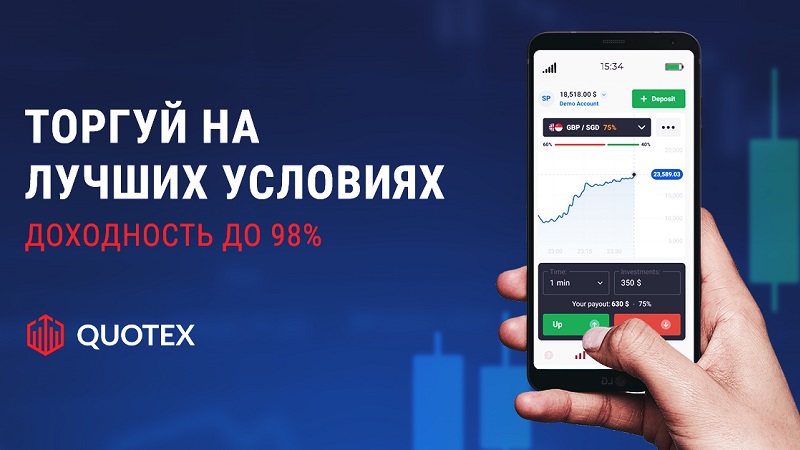
A fresh look at financial markets and binary trading The financial services industry offers a wide range of investment products in a huge number of financial markets: Forex, binary options, stocks, contracts and many others. Accordingly, investors and traders are faced with a staggering selection of potential investments. It is important for investors to consider the environment, assess opportunities and determine the most suitable market for their abilities, personality and investment goals. So, let’s take a closer look at the financial markets.
Capital Markets
Capital markets are the first category that investors consider when they are looking for a place to make a potential investment. The main categories of investment solutions are stocks, bonds, mutual funds, and exchange-traded funds (ETFs). Implementation options differ from each other in terms of diversity and strategy, and a lot of information about these investments is available on the Internet.
Stock securities
Many investors start with the stock market. This is relatively easy to understand, as many companies, their characteristics are associated with familiar products, they are easily accessible and have a high trading volume, which creates liquidity and allows investors to make a profit with a relatively small amount of investment. The global market consists of more than $54 trillion of stocks as of the end of 2012, and another 46,000 stocks to choose from, according to the Paris-based World Federation of Exchanges.
Bonds
A bond is a type of debt securities that can be bought and sold to investors in credit markets around the world. The bond market is larger in nominal terms than the global stock market. Bonds, as a rule, are considered passive, with a low level of risk, low volatility of investments. This market also has correspondingly low returns compared to the stock market on closer inspection over long periods of time. The global bond market covers about $80 trillion in 2012, according to the Bank for International Settlements (BIS), the exact figure may vary depending on the source methodology and calculation. This is almost twice as much as in the stock market. This market includes various types of bonds, including corporate, sovereign and municipal bonds, and also crosses the quality spectrum from high quality to “garbage”.
Mutual funds
Mutual funds consist of cash collected from many investors. The fund manager uses these funds to purchase a portfolio of stocks, bonds, money market instruments, and similar assets on behalf of investors. Each share represents the ownership of a piece of the fund and gives the investor a share of the securities pool based on the amount of money invested. In many ways, mutual funds offer novice investors the easiest, most convenient way to start investing. They provide convenience and even professional cash management at a reasonable price. There are mutual funds that invest in stocks, mutual funds that invest in bonds, and mutual funds that combine both stocks and bonds.
With the purchase of a single mutual fund, investors can diversify their portfolios across different industries and/or sectors without having to spend time analyzing securities or developing comprehensive asset allocation strategies. They also offer a wide range of active or passive management, with the former providing access to the skills and insight of some of the world’s best money managers, and the latter providing a reasonable chance by generating profits that match the overall market. Many of the benefits associated with mutual funds have helped them generate a huge amount of money. According to the company’s Investment Institute, the Industry Mutual Fund raised $268000000000000 in assets, with the U.S. mutual fund accounting for the lion’s share of $13 trillion at the end of the year 2012.
Exchange-traded index funds
Index funds (ETFs) have only been around since the early 1990s, but they quickly became popular with investors. They had $2 trillion in assets at the end of the year 2012, and there is no sign of waning in popularity. Exchange-traded index funds offer many of the same benefits that mutual funds provide.
They cover a wide range of strategies and markets, include both active and passive strategies, and cost far less than most mutual funds. While mutual funds and ETFs have many differences, their technical details are largely of little concern to most investors. The main differences are that exchange-traded index funds tend to be passively managed and have lower costs.
Beyond Capital Markets
A significant share of private investor participation, various product offerings, limited inventory, and a significant degree of government regulation all combine to make capital markets comfortable for novice investors. But with this limited risk comes limited profit potential – this is a classic example of how the risk-return trade-off works. This is partly because there is often a physical limit to how fast a company or economy can grow, and partly because of the reduced availability of leverage. For example, most private investors are restricted from borrowing no more than 50% of the nominal value of their shares in a margin account. Investors who are willing to take big risks in pursuit of higher returns often look to other markets, including the commodity market and derivatives markets.
[frame align=”center”] [/frame]
[/frame]
Commodity markets
Trading opportunities in the commodity market range from gold and oil to soybeans, wheat, coffee, cotton and cattle. There are currently about 50 major commodity markets around the world that facilitate investment trading in nearly 100 commodities. These are hard commodities (natural resources extracted or extracted, such as gold, rubber, oil, etc.) and soft commodities (agricultural or livestock products, such as soybeans, wheat, coffee, sugar, etc.). Buyers who want to purchase a certain product pay on the spot, in cash. They pay the amount based on the current market price. Such buyers have the space to store huge quantities of physical goods, while the average investor does not have enough space to store, say, 10,000 gold bars, or 50,000 head of cattle, or 100,000 barrels of oil.
The money market is complex and delicate, and is generally not suitable for inexperienced traders. Money markets tend to be dominated by so-called institutional market players, such as hedge funds, limited partnerships, and corporate investors. The very nature of tradable products requires access to far-reaching detailed information and a high level of macroeconomic analysis and trading skills.
It is very important that any private investor wishing to trade within these markets has had the time to gain the necessary experience and understand the market before risking capital. A viable alternative is to invest in joint-stock limited companies that operate in the commodity industry (forestry, mining, etc.). It can also be done through mutual funds or tradable investment funds that specialize in commodities (gold, for example) or commodity trading businesses.
[frame align=”center”] [/frame]
[/frame]
Derivative financial instruments market
The market is called derivative for a specific reason: its value is a derivative of the value of the main asset or assets. A derivative is a contract, but in this case, the contract price is determined by the market price of the underlying asset. It may sound a bit complicated, but that’s exactly what it looks like. Examples of common derivatives are forwards, futures, options, swaps, and contracts for difference (CFDs). Not only are these tools complex, but so are the strategies that are used by participants in this market. There have been some interesting and highly publicized institutional losses in the derivatives market. U.S. policymakers and regulators have demonstrated their concerns about the exploitation of derivatives – and, by extension, the exploitation of investors.
Many derivatives, structured products and secured liabilities are also available, mainly in the more over-the-counter (non-exchange) market, which are used to varying degrees by professional investors, institutions and hedge fund managers, but they play a minor role in private investing. The chance of high profits attracts the interest of individual investors. However, many opt for professionally managed investments that delegate decision-making power to experienced investment professionals. Complex derivative investing requires a high degree of analytical and mathematical prowess, as well as a broad macroeconomic understanding.
The derivatives market adds another layer of complexity, and is therefore not suitable for inexperienced traders who want to trade. As we have already noted, the main innovation in this market is the desire to achieve a more reliable level of profit and better risk management. Mutual funds and exchange-traded funds use derivatives in a way that makes them more predictable, and more focused on making more consistent, reliable returns on investments. Investors are looking for equity funds, a type of fund in which funds are placed depending on the level of risk.
In terms of size, as of the end of 2012, the gross market value of the derivatives market is estimated at more than $24.74 billion, according to the Bank for International Settlements (BIS). Results
Investors have many options for allocating their capital. These investments come at different levels of complexity and offer a wide variety of opportunities, from fully self-made decision-making, to full delegation of authority to make trading decisions. With so many options, investors have every right to look and take a closer look before investing. The time spent researching the place where your money will be is not wasted.
Tagged with: Binary Options Academy • Fundamental analysis


